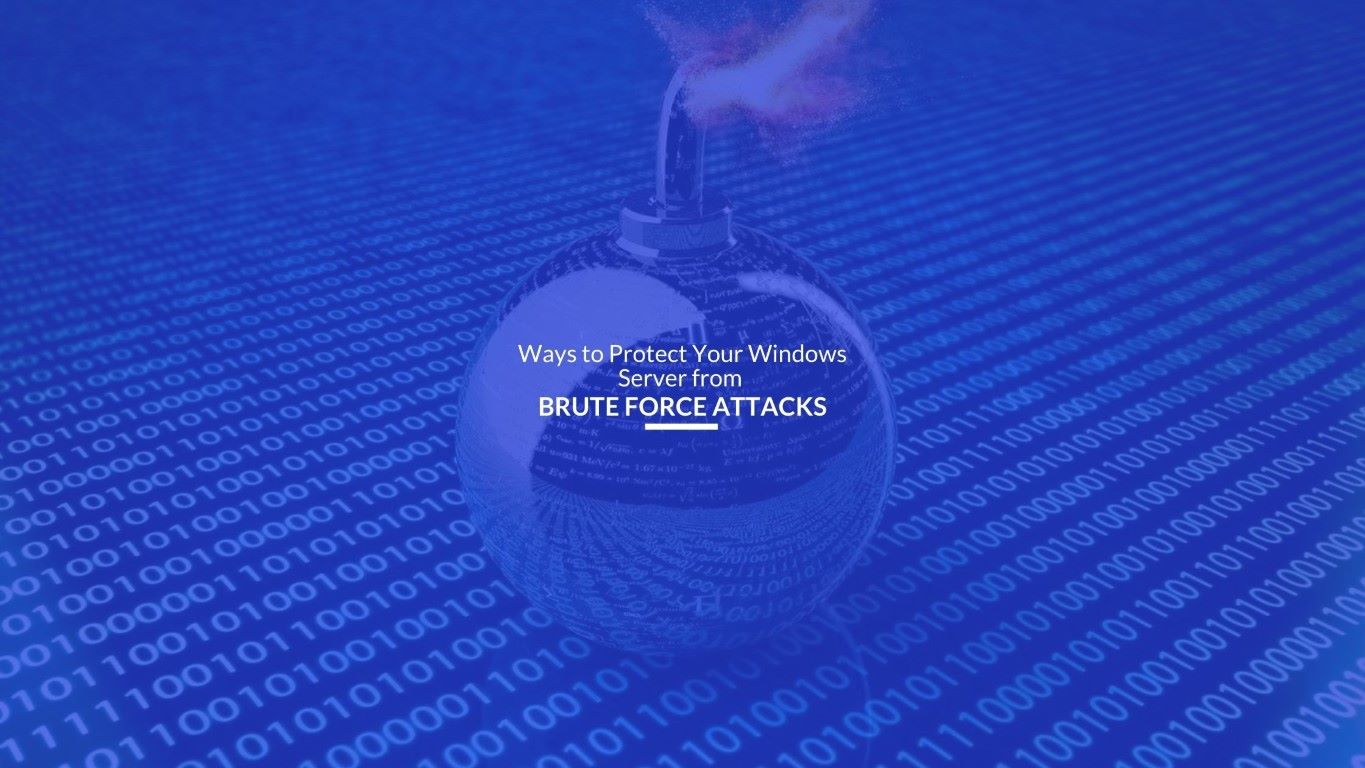Every trained Network admin or basic server security expert knows that keeping the RDP or Remote Desktop Protocol Port open to Internet or having employing a weak password will make the network vulnerable to cyber attacks. In this blog we discuss more about how to prevent Brute Force Attacks on the Windows Server.
Defining and Preventing Brute Force Attacks
Hackers use to get into a computer, network, website or any online service with many ways. One of the simplest time consuming method to hack server or a system is Brute Force Attack. The Brute Force attack mechanism has some benefits, including the ability to evaluate network security and recover lost passwords.
Defend Windows Server against Brute Force Attacks
The following is a list of advice for you if you wish to prevent or block Brute Force Attacks on Windows Server. The tips are as follows:
- Create a Strong Password
This is the first and foremost step while creating an account; you must enter a strong password in a tricky way which couldn’t be found out by anyone. If the hackers are trying your password, don’t give them even a clue about Password, User Name and ID. Don’t relate your password with your personal details like Age, DOB, Name, etc. Go through the Password policy of Windows.
- Make your Root Account Safe
Root Account is very important in a real or virtual network; it is like the king in a chess game. You must ensure that it is not accessible. Set the parameters ‘DenyUsers root’ and ‘PermitRootLogin no’ in the sshd_config file to do this.
- Control the Number of Failed Login Attempts
As you may already be aware, Brute Force attacks work in a certain way. As a result, there will be numerous failed efforts. You can feel guaranteed that the attack will not succeed if you limit failed login attempts.
The ‘Account lockouts with increasing delays’ feature is also available. In this manner, your account will be shut after a fixed number of failed tries which will make things much easier for the network administrator.
- Modify your Port
The attacker will almost always try to attack port 22 because it is the typical port. As a result, the port on which the SSHD is supposed to execute must be changed. Use a non-standard port in the sshdconfig file to do this.
- Turn on CAPTCHA
Upto a limit we can control the Brute Force attack by enabling the CAPTCHA. It is one of the brilliant way to slow down the process of attack or can stop the process entirely by robot or AI. In advanced cyber attacks, hackers will use tools to get around the CAPTCHA. However, you should configure it because not all attackers are equipped with this tool. However, keep in mind that CAPTCHAs aren’t exactly user-friendly and might actually degrade user experience.
- Authentication with Two Factors
Many large corporations like Google and Microsoft utilise two factors authentication to protect their systems or server against cyber threats, including brute force attacks. You can use this security technique to protect your server as well.
- Install an Efficient Tool to Prevent Brute Force Attack
By installing the tools we can keep an eye on our server or computer, also we can analyse and control the attack. If there is a large number of failed attempts with a particular IP or set of IPs It then blocks that IP for two hours, slowing down the rate of attacks. If you wish to make certain exceptions or change the block time, you can do so by configuring the programme.
How can I tell if my server is being attacked by brute force?
Check your server logs if you want to find out if your PC is under Brute Force Attack or not. You’re under a Brute Force Attack if you’re seeing a lot of failed attempts. If a single IP address or even numerous IP addresses make a lot of failed attempts in a short period of time, you should quickly examine your client IPs and immediately block them if you determine that these IPs are those of attackers.




